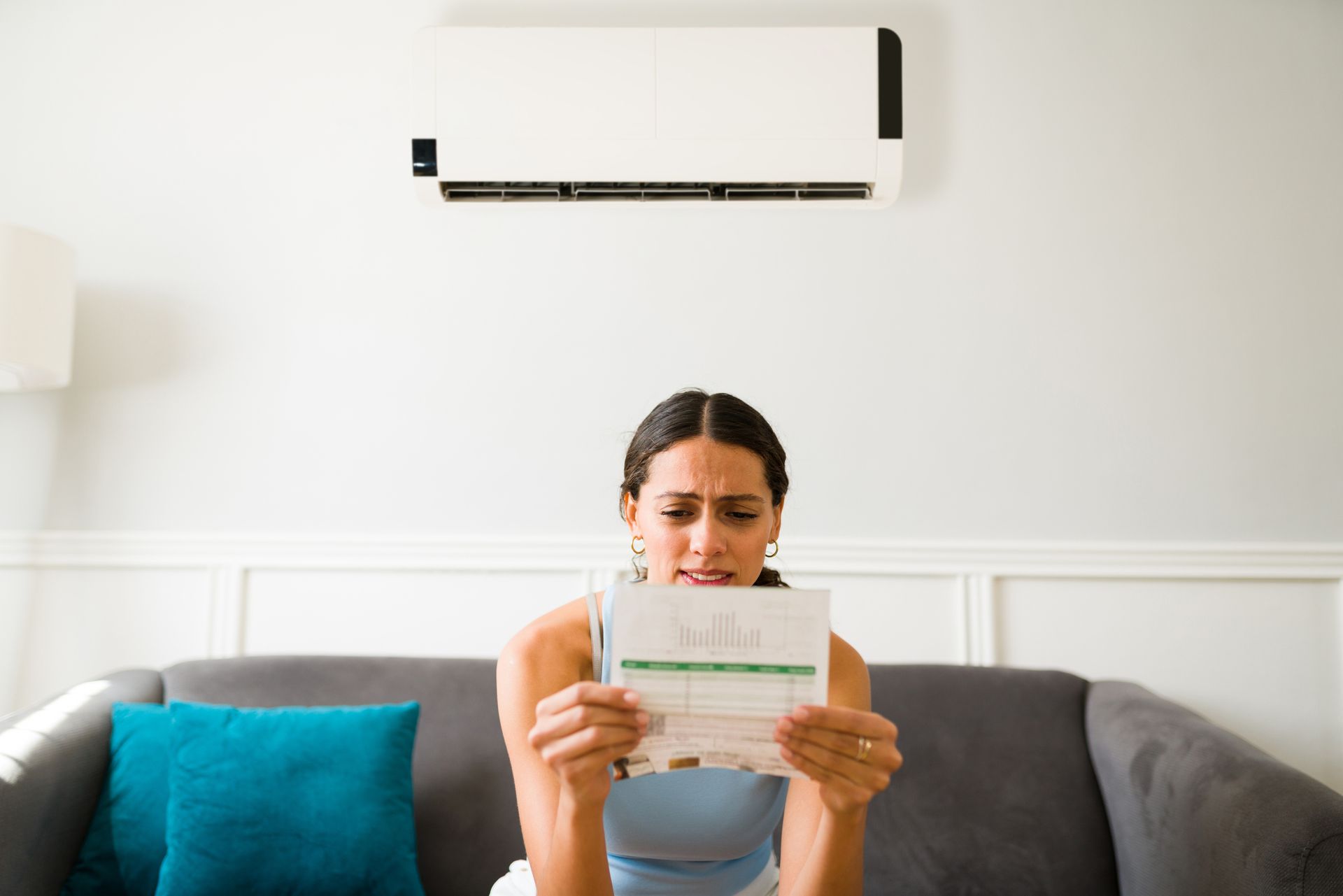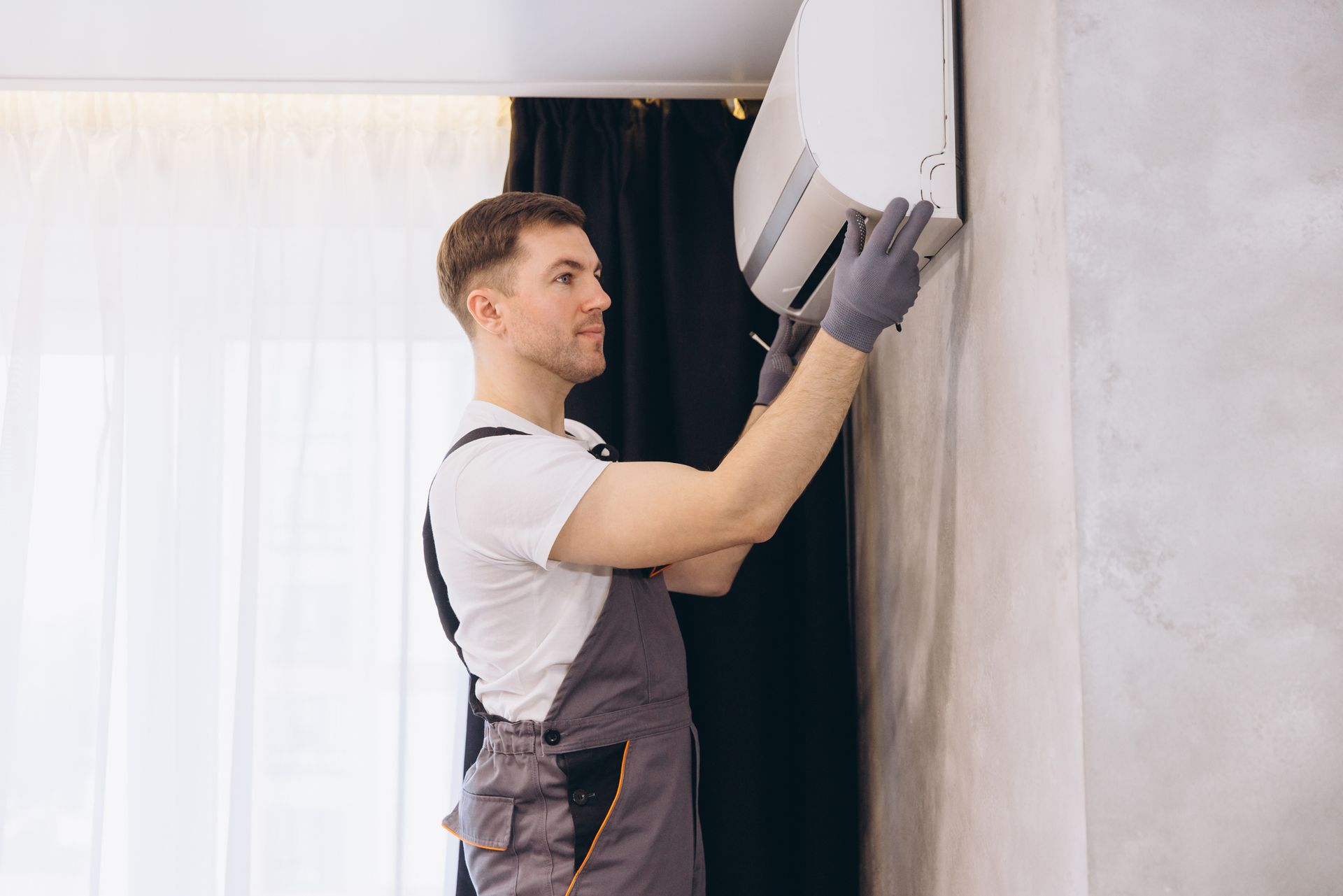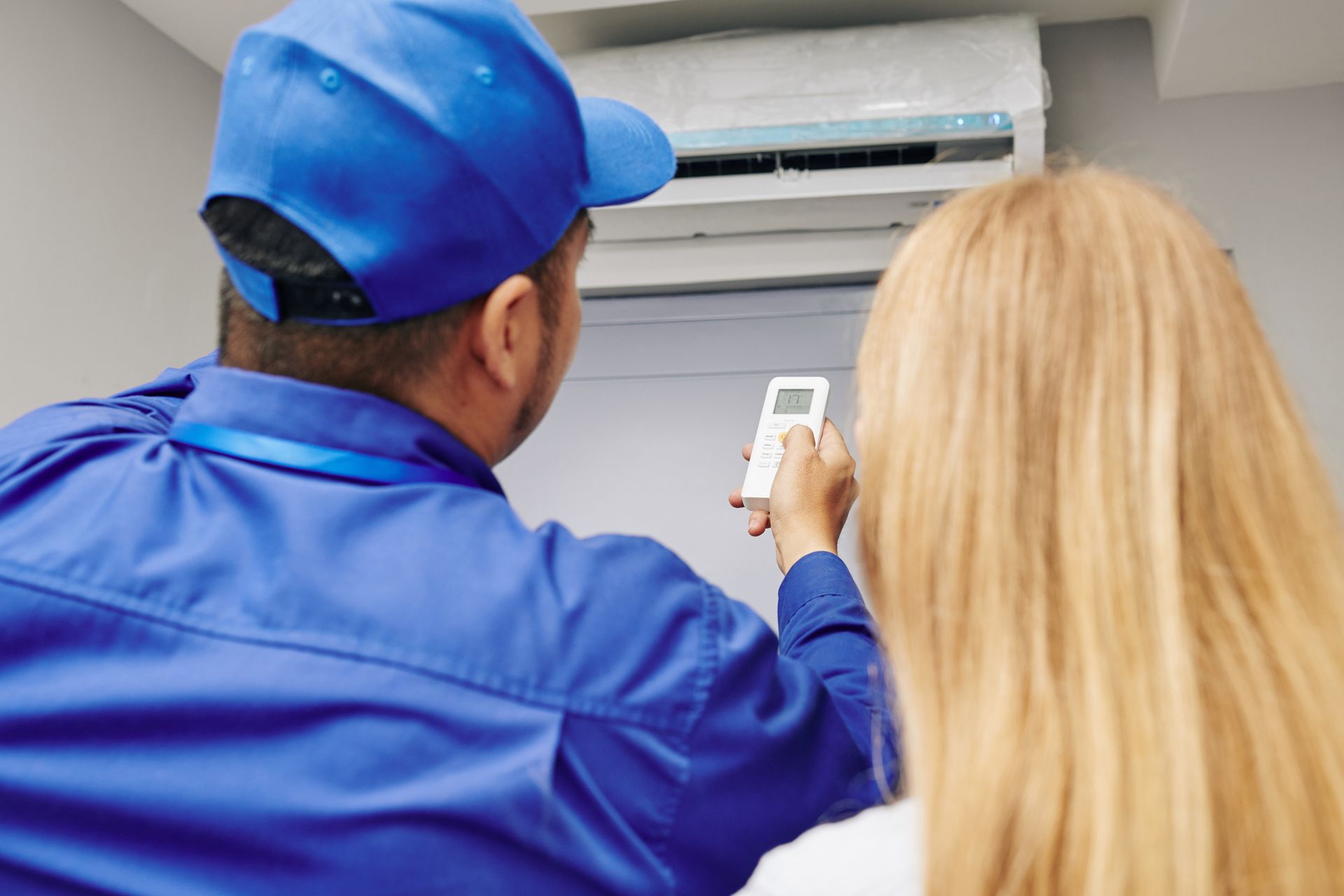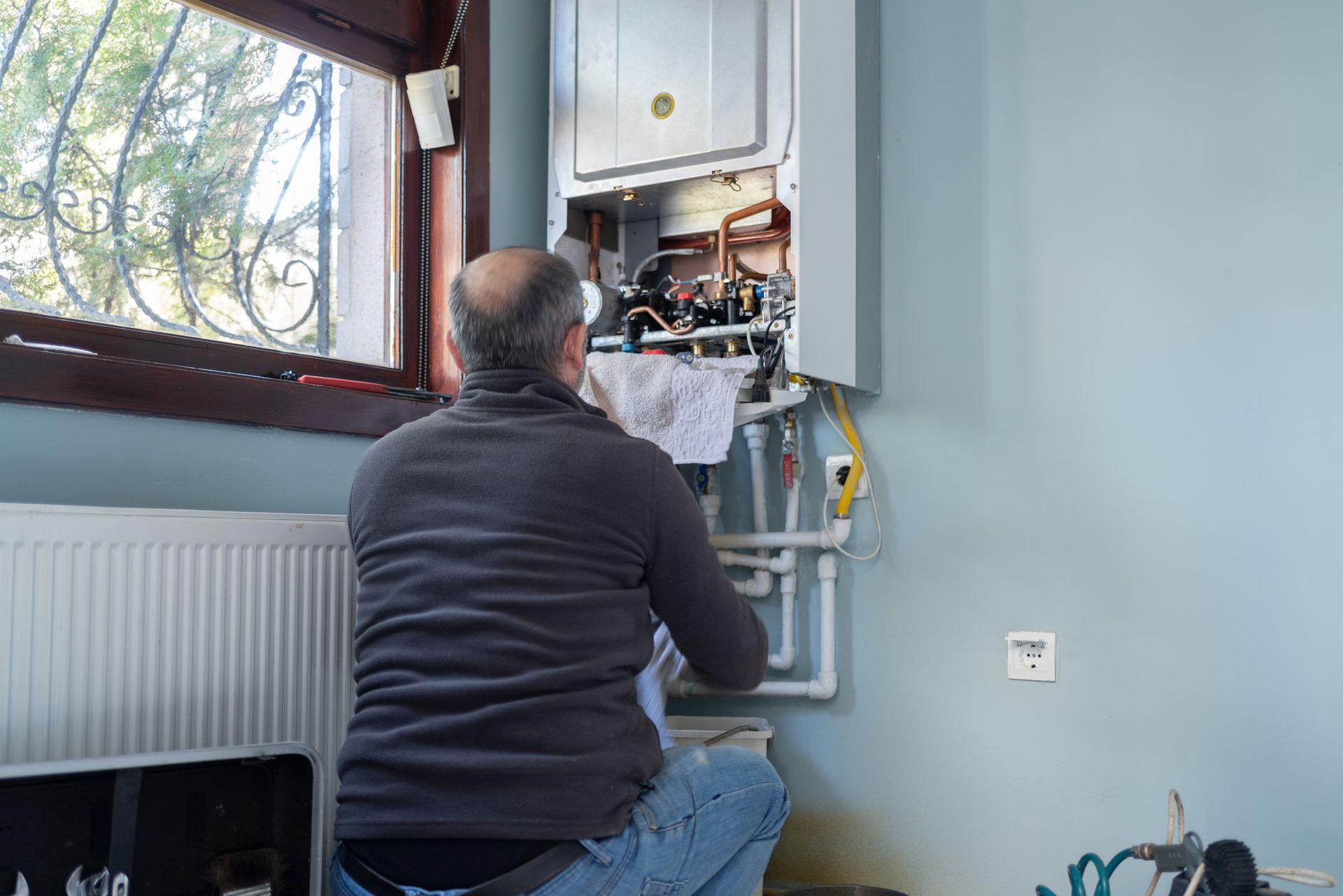AIR CONDITIONING, MAINTENANCE
CENTRAL AIR VS. WINDOW UNITS
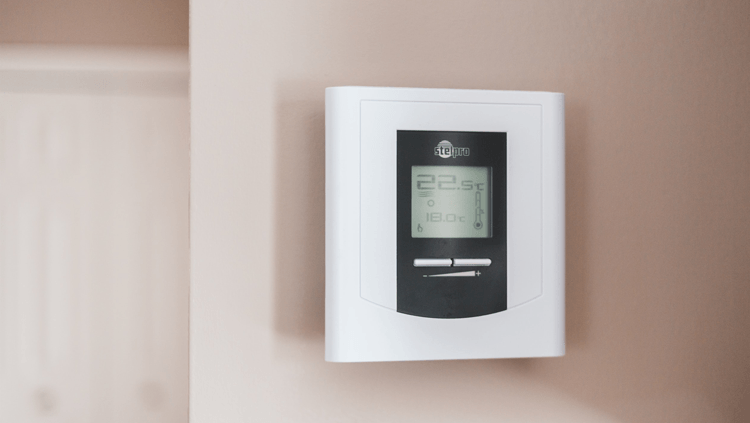
On average, most people are comfortable when the temperature in the house is around 70 degrees. But when it comes to cooling your home down during the warm summer months, choosing between central air and window units can be a difficult decision.
Whether you’re concerned about overall costs or the effectiveness of either system, we’ve got you covered. In this blog post, Hoffner Heating and Air Conditioning, a family-owned and operated HVAC company, outlines the pros and cons of central air conditioning and window units to help you determine which system may be better suited to fit your needs.
Central Air
Central air conditioning is a system that cools the air in an outdoor metal unit and uses fans to circulate that air throughout the ductwork in the entire home. These units are typically located on the roof or the side of the home. Contrary to popular belief, central air conditioning does not create cool air from scratch; rather, it turns warm or hot air from the outside into cold air.
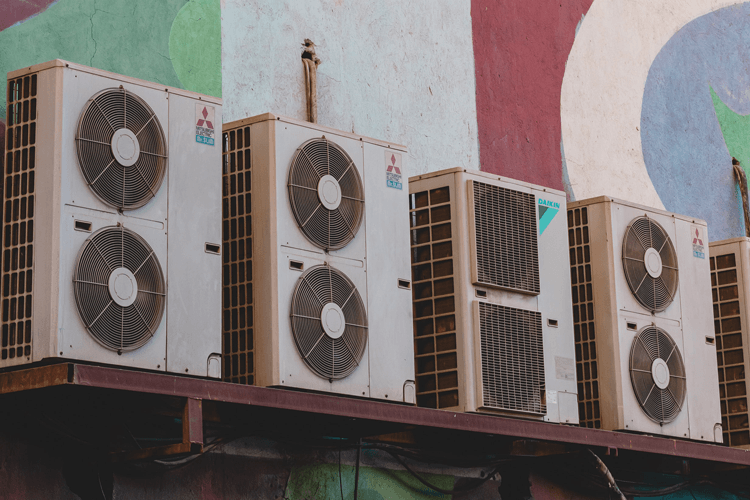
Cooling Process
During the central air’s cooling cycle, outside air is pulled into the ductwork by the blower and passes over evaporator coils filled with refrigerant. Refrigerant is a chemical compound that absorbs heat and repeatedly transitions back and forth from a liquid to a gas. Once the air is cool, it is cycled throughout the home through your ductwork.
Next, the heat that was initially taken into the ductwork and absorbed by the refrigerant travels to the central air’s outdoor condensing unit. In the condensing unit, the warm refrigerant is converted into a gas that enters the unit’s condenser coils, releasing the excess heat back into the outdoor air.
The higher the British thermal unit (BTU) rating, the more heat can be removed from a room. The guidelines for central air conditioning are as follows:
- To cool down 700 to 1,000 square feet, you’ll need 18,000 BTU
- 1,200 to 1,400 square feet: 21,000 BTU
- 1,500 to 2,000 square feet: 30,000 BTU
- 2,000 to 2,500 square feet: 34,000 BTU
- 3,000 to 4,000 square feet: 48,000 BTU
- 5,000+ square feet: 60,000 BTU
Expenses
According to HomeAdvisor, the installation cost for central air conditioning in your home typically ranges from $3,811 to $7,485, with the national average being $5,648 per household. The price of installing a central air conditioning system is based on the size of the home, any necessary repairs, equipment size, ductwork, and labor. However, there are numerous ways to lower the cost of air conditioning and save on electricity bills.
Window Units

A window unit is an air conditioner with all components located within a singular casing; no ductwork is required. These units are plugged into an outlet, rest in a window, and cool down a single room at a time.
Cooling Process
Like central air, a window unit uses a blower, refrigerant, a compressor, an evaporator coil, and a condenser coil. The guidelines for choosing individual window units are as follows:
- To cool down 150 to 350 square feet, you’ll need 5,000 to 8,000 BTU
- 350 to 550 square feet: 8,000 to 12,000 BTU
- 550 to 1,050 square feet: 12,000 to 18,500 BTU
- 1,050 to 1,600 square feet: 18,500 to 25,000 BTU
Expenses
Window units, on average, cost between $150 to $1,100. The price for installing a window unit ranges from $139 to $494, averaging at $295, but many homeowners choose to do so independently. Other factors impact the monthly expense that comes with a window unit as well, such as:
- Size of air conditioner
- Age of air conditioner
- Size of the home
- Thermostat setting
- Price per kWh of electricity
- Insulation quality
- Single-pane or multi-pane windows
Which System is Best?
Cost and efficiency are two key factors to consider when determining which cooling system is best suited to fit your needs. What’s more, if your existing home does not already have central air conditioning installed, the length at which you intend to remain in your current home (and if you wish to increase its resale value, because installing central air will drive your home’s value up) plays a key role as well.

CENTRAL AIR
PROS
- Consistent temperatures year-round
- Runs through the entire home
- Controlled by one thermostat
- Thermostat is often programmable
- HVAC add-ons
- Invisible and more aesthetically appealing
- Filtered air
- Humidity control
- Adds value to your home
- Energy-efficient options
- Operates quietly
CONS
- Duct maintenance
- Cost of installation
- Higher energy bills
WINDOW UNITS
PROS
- No ductwork
- Flexible placement
- Easy to install on your own
- Energy efficient
- No maintenance costs
- Energy-efficient options
CONS
- Inconsistent temperatures
- Limited cooling range
- May need multiple units
- Visually unappealing
- Choosing the right size for the a room
- Noise level
- Drainage
In an interview with Time Magazine, Alan Hummel, a Real Estate Valuation professional, said that installing central air “will increase your property value by as much as 10%.” So, while central air may be a more significant investment, it may increase your return in the long run.
As it turns out, more homeowners are deciding to purchase a home that already has central air conditioning installed, given its efficiency. In 2015, the U.S. Energy Information Administration (EIA) found that of 87% of Americans who had air conditioning systems installed, 60% had opted for central air while 23% chose window units.
Choosing the Right AC for You
As warmer weather approaches, it’s crucial to find effective ways to keep you and your home both cool and comfortable! Whether you need further advice on choosing an air conditioning system or assistance with an installation of either central air or window units, Hoffner Heating and Air Conditioning is here to help. To learn more about the services we have to offer, contact us today.
JULY 28, 2021/BY MATTHEW FLOWERS


